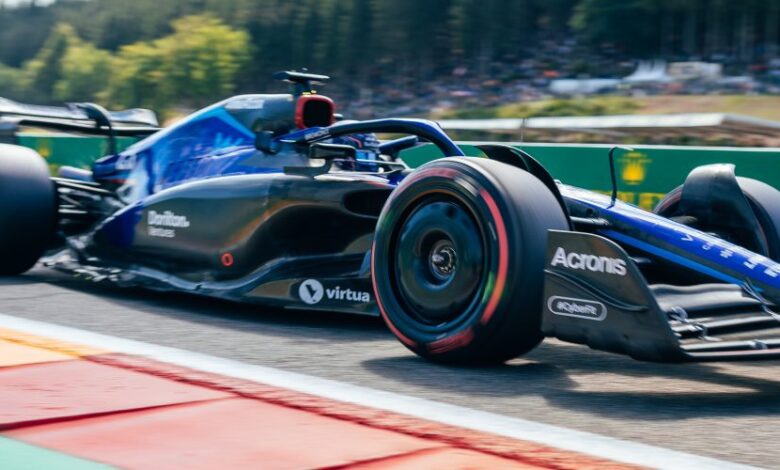Title: Exploring Cutting-Edge Motorsports Technology for Future Competitions

In recent years, motorsports technology has rapidly transformed everything from vehicle performance to fan engagement. With advanced engineering, data analytics, and cutting-edge materials, technology is now at the forefront of competitive racing. This evolution continues to push the limits of speed, safety, and sustainability. This article dives into the critical advancements in motorsports technology and how they shape the future of racing.
The Role of Data Analytics in Motorsports
One of the most significant advancements in motorsports is using data analytics to improve vehicle performance and race strategies. Teams use car sensors to monitor everything from engine performance to tyre pressure; this data is analyzed in real time to make critical adjustments.
Telemetry Systems
Telemetry systems are now standard in most motorsports. These systems gather data such as speed, fuel efficiency, and tyre degradation, allowing teams to make split-second decisions. This data is transmitted wirelessly to teams in the pit lane, where engineers use it to tweak race strategy.
Predictive Analytics
Predictive analytics allows teams to anticipate how a race will unfold based on past data and current conditions. Machine learning algorithms predict how different factors, such as weather or track conditions, will impact performance. This provides a competitive edge to teams that can adjust their strategy in real time.
Source: Motorsport.com – Data Analytics in Racing
Advancements in Aerodynamics
Aerodynamics plays a crucial role in determining the performance of race cars. The better a car cuts through the air, the faster it can travel. Recent motorsports technology focuses on optimizing the aerodynamic design of vehicles to reduce drag and increase downforce.
Computational Fluid Dynamics (CFD)
Computational fluid dynamics (CFD) is an indispensable tool in motorsports. It allows engineers to simulate the airflow around a car and identify areas for improvement, leading to more efficient aerodynamic designs without the need for extensive wind tunnel testing.
Active Aerodynamics
Another exciting advancement is active aerodynamics, where certain car parts, such as wings or flaps, adjust automatically depending on the driving conditions. For example, a wing may flatten out on straights to reduce drag and then tilt for better downforce in corners.
Source: Racecar Engineering – Aerodynamics in Motorsports
Hybrid Powertrains and Electric Racing
Sustainability is an increasing focus in motorsports, leading to the development of hybrid and fully electric powertrains. These advancements help reduce carbon emissions and push the envelope regarding vehicle performance.
Formula E and Electric Racing
Formula E, the all-electric racing series, is a testing ground for electric vehicle (EV) technology. Electric powertrains provide instant torque, offering a unique driving experience compared to traditional internal combustion engines. The automotive industry is rapidly adopting the advancements made in Formula E.
Hybrid Systems in Formula 1
Formula 1 (F1) has also embraced hybrid technology, using energy recovery systems (ERS) to capture wasted energy from braking and convert it into electrical power. This system improves fuel efficiency and adds horsepower during races, making F1 cars faster and more efficient than ever.
Source: Formula E – Electric Racing Technology
Safety Innovations in Motorsports Technology
Safety has always been a priority in motorsports, and technology has made significant strides in improving it. Modern safety innovations have reduced fatalities and severe injuries in the sport.
The Halo Device
One of the most important safety innovations in recent years is the halo device, a protective structure mounted above the cockpit of open-wheel cars. It is designed to protect the driver from debris and collisions. Since its introduction, the Halo has already saved multiple lives in Formula 1 and other racing series.
Fire-Resistant Materials
Advancements in materials science have also improved the safety of race cars. Fire-resistant materials are now used in both driver suits and car components. These materials can withstand high temperatures and provide drivers with crucial seconds to escape in case of an accident.
Source: FIA – Motorsports Safety
Advanced Tire Technology
Tire technology is critical in motorsports. Tire performance affects everything from speed to fuel efficiency and handling. Innovations in tyre technology allow drivers to push their vehicles to the limit while maintaining safety.
Smart Tires
Innovative tyres with sensors can monitor pressure, temperature, and wear in real-time. This data is sent to the team, allowing them to adjust strategy, such as when to pit for new tyres. These tyres provide valuable information that can be used to improve future tyre designs and race strategies.
Sustainable Materials
Sustainability is also a key concern in tyre technology. Manufacturers are exploring new materials, such as bio-based rubbers and renewable compounds, to create eco-friendly tyres without sacrificing performance.
Source: Pirelli – Motorsports Tire Technology
Fan Engagement Through Technology
Motorsports technology enhances performance on the track and improves the fan experience. Virtual reality (VR) and augmented reality (AR) provide fans with new ways to engage with the sport.
Virtual Reality and Sim Racing
Virtual Reality (VR) is becoming an essential tool for fan engagement in motorsports. Fans can now use VR headsets to experience a race from the driver’s perspective or even participate in virtual sim racing events. This immersive experience brings fans closer to the action than ever before.
Augmented Reality for Data Visualization
Augmented Reality (AR) enhances broadcasts by overlaying data such as lap times, tyre conditions, and race positions onto the screen. This gives fans more information and a deeper understanding of the race as it unfolds.
Source: Motorsports VR – Fan Engagement
The Future of Autonomous Racing
Autonomous vehicles have entered motorsports, with several competitions focusing on driverless cars. These races serve as testing grounds for autonomous vehicle technology, pushing the boundaries of what is possible.
Roborace
Roborace is the first autonomous racing series where AI-powered vehicles race against each other without human drivers. The technology developed in Roborace is expected to trickle down into commercial autonomous vehicle systems.
AI-Driven Race Strategy
Artificial intelligence (AI) is being used to drive cars autonomously and make real-time strategic decisions. AI can analyze data faster than humans and make split-second decisions, such as when to pit or adjust fuel consumption.
Source: Roborace – Autonomous Racing
Sustainability in Motorsports Technology
Sustainability is becoming a core focus of motorsports technology. Motorsports is no exception as the world moves towards reducing its carbon footprint. Racing series are adopting sustainable practices, from energy-efficient powertrains to eco-friendly materials.
Renewable Fuels
Renewable fuels are gaining traction in motorsports, with several racing series experimenting with biofuels and synthetic fuels. These fuels offer a greener alternative to traditional gasoline and diesel, helping to reduce the sport’s environmental impact.
Recycling in Motorsports
Motorsports teams are also focusing on recycling and reusing materials. For example, carbon fibre components are being recycled, and efforts are being made to reduce the waste generated during races.
Source: FIA Sustainability
Final Thoughts
Motorsports technology is evolving at an unprecedented pace, with advancements in data analytics, aerodynamics, safety, and sustainability shaping the future of racing. Integrating AI, hybrid systems, and electric powertrains highlights the sport’s adaptability to modern challenges, particularly environmental concerns. As these technologies continue to develop, motorsports will likely become safer, more exciting, and more sustainable.
Questions and Answers
Q: How does data analytics improve race strategies in motorsports?
A: Data analytics provides real-time information about vehicle performance, allowing teams to adjust immediately during the race and improving strategy and outcomes.
Q: What are intelligent tyres in motorsports?
A: Smart tyres are equipped with sensors that monitor pressure, temperature, and wear in real time, providing valuable data to teams for optimizing performance.
Q: How is sustainability being addressed in motorsports technology?
A: Sustainability is addressed by developing hybrid powertrains, electric racing, renewable fuels, and eco-friendly materials.
Q: What role does AI play in autonomous racing?
A: AI drives autonomous vehicles and makes strategic decisions during the race, analyzing data faster than human teams can.
Q: How is fan engagement improving through motorsports technology?
A: Virtual reality (VR) and augmented reality (AR) enhance the fan experience by offering immersive and data-rich interactions with the sport.
4o




